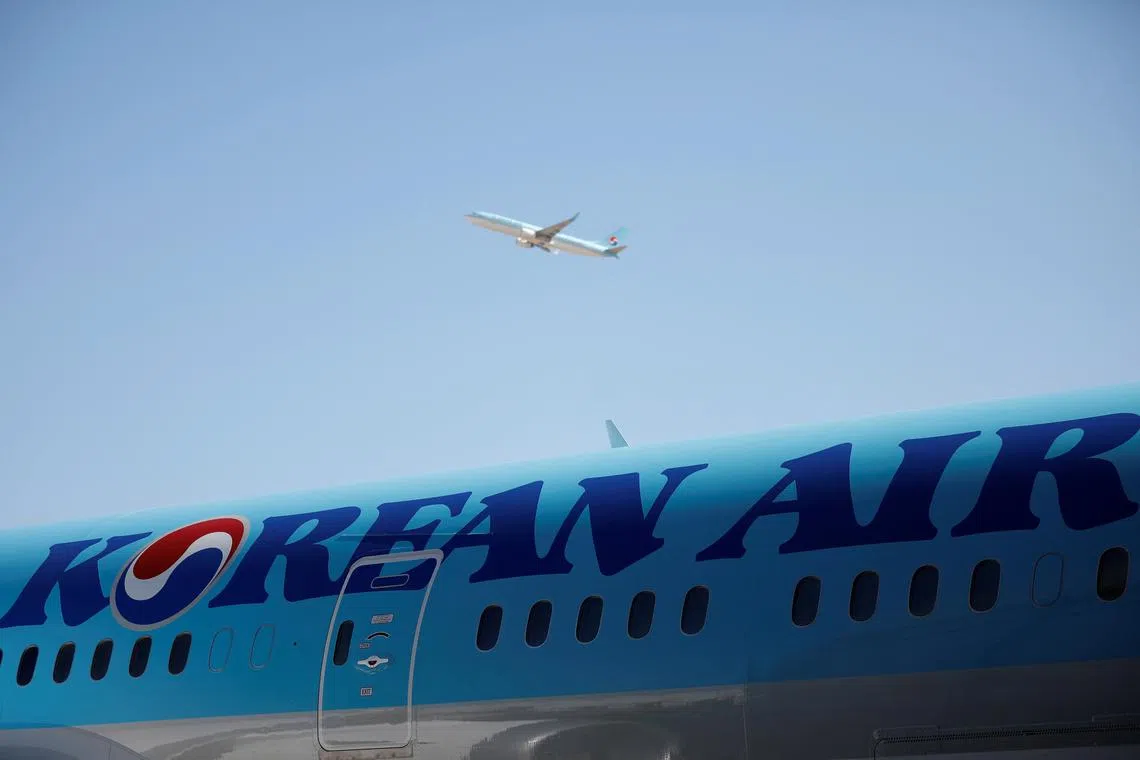Korean Air plane scrapes Cathay Pacific aircraft at Hokkaido airport
Sign up now: Get insights on Asia's fast-moving developments

Two planes, one from Korean Air and the other from Cathay Pacific, collided at New Chitose Airport in Hokkaido on Jan 16.
PHOTO ILLUSTRATION: REUTERS
Follow topic:
TOKYO – A taxiing Korean Air plane clipped a Cathay Pacific airliner at New Chitose Airport in Hokkaido on Jan 16, but no one was reported injured.
The incident occurred at about 5.30pm local time (4.30pm Singapore time), as the Korean Air plane was preparing for take-off.
There were 289 passengers and crew on board the Korean Air flight, Yahoo Japan reported.
The Cathay Pacific aircraft had no passengers on board. The airline said the accident took place while its aircraft was parked.
“Our aircraft, which was stationary at the time with no customers nor crew on board, was struck by a Korean Air A330 which was taxiing past,” the airline said in a statement.
Korean Air also confirmed there were no injuries on board its plane.
“A Korean Air aircraft came into contact with a Cathay aircraft during pushback ... when the third-party ground handler vehicle slipped due to heavy snow. There were no injuries and the airline is cooperating with all relevant authorities,” the carrier said.
Japan’s 47News reported that the accident resulted in damage to the left wing of the Korean aircraft and a vertical stabiliser of the Cathay Pacific plane.
Cathay Pacific said its “Flight CX583 from Sapporo to Hong Kong will not operate as scheduled”.
Airport firefighters were on standby following the accident, but no oil leaks or fires had been confirmed, according to Hokkaido Cultural Broadcasting.
Visibility at the New Chitose Airport has been hampered by heavy snow, which has led to the cancellation of dozens of flights.
The latest incident comes two weeks after a collision between a Japan Airlines plane and a coast guard aircraft
Five people – all from the coast guard plane – were killed in that incident on Jan 2.
The JAL flight, which caught fire after the collision, had 379 passengers and crew on board. All of them escaped the blaze.
The Japanese government announced last week that it has tightened its air traffic control protocols after the accident.
Under the new requirements in place nationwide, a staff member must constantly watch a monitoring system that alerts control towers when runway incursions take place.
To prevent misunderstandings, controllers must not tell planes what number in line they are for take-off, the transport ministry said in statements uploaded to its website.
“One of my biggest missions is to restore confidence in aviation as public transport,” Transport Minister Tetsuo Saito said.
The ministry also said it would set up an expert panel to investigate further ways to improve safety.
A transcript of communications released by the ministry suggested that the JAL plane was cleared to land, but the coast guard plane was instructed to halt before the runway.
Controllers told the coast guard plane that it was “No.1”, meaning next in line for take-off.
But the coast guard pilot – the only survivor – has reportedly said he believed he had clearance to move onto the runway, where his plane stood for around 40 seconds before the crash.
In the decade to 2023, at least 23 “serious incidents” that risked a runway collision were reported by the Japan Transport Safety Board, according to the Asahi newspaper.
In five of the cases, mistakes in air traffic control were suspected as a cause, the newspaper said. AFP, REUTERS

